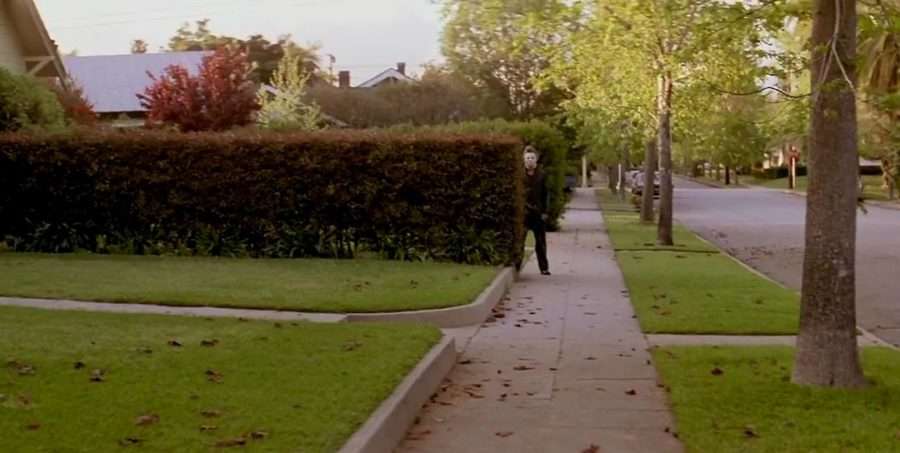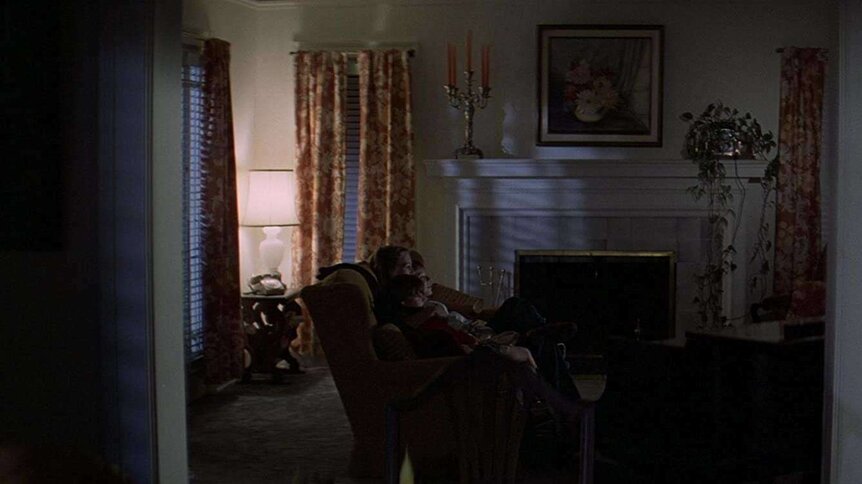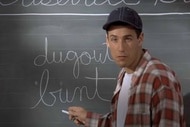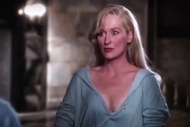Create a free profile to get unlimited access to exclusive videos, sweepstakes, and more!
Reveling in the simple, cathartic, autumnal magic of John Carpenter's Halloween

Popular legend tells us that Halloween is the night when the veil between worlds is at its thinnest, when the dead are most likely to walk among the living, and when the atmosphere is thick with a heady mixture of possibility, darkness, and magic. For most of us, though, it's just a day on the calendar, which means it comes with other responsibilities, concerns, and in 2020, a pandemic and a looming election that feels far more frightening than anything All Hallow's Eve might throw at us. With that in mind, it's usually up to us to create that atmosphere of the thin veil, that sense that spooky happenings are afoot even if we're just having a quiet night at home with treats and horror movies.
Put simply, we work with what we have, and for me, there is no better example in all of horror filmmaking of working with what you have than my favorite horror film of all time, John Carpenter's Halloween.
Halloween is a classic for a lot of reasons, from its contributions to cementing the slasher movie subgenre to Jamie Lee Curtis' tremendous performance as Laurie Strode to Carpenter's score to the unforgettable image of The Shape as he stalks through Haddonfield, Illinois. It's also a classic because it has tremendous rewatch value, both because of the sense of fun that permeates and because of the way Carpenter and his producer and co-writer, the great Debra Hill, layered in so many details on such a tight schedule and budget. There's a chance that, even if you've seen the movie a dozen times, you missed a hidden appearance of Michael Myers somewhere, or you didn't notice a little background detail lurking in a corner that's either funny or meaningful, or both.
Because it's my favorite horror film, I've taken advantage of this rewatchability every Halloween season for at least the past 18 years or so, ever since I first saw Carpenter's film, and I'd like to think I've soaked up just about everything the movie has to offer me at this point. So, why do I keep coming back?
Because for all its scares and tension and careful character building, Carpenter's Halloween is also the perfect encapsulation of the kind of All Hallow's Eve magic I grew up with — the kind that comes from a lazy, almost boring night at home on the spookiest evening of the year.
I grew up in Central Texas, in the middle of nowhere to the extent that the tiny town I say I'm "from" wasn't actually where I lived, but happened to share a postal code with the area 10 miles outside of the tiny town where I actually lived. When I was little, Halloween was full of typical trick-or-treat fun, but once I'd aged out of that and into my nerdy introverted sensibilities in junior high and high school, the holiday became a little more distant. There wasn't much to do on All Hallow's Eve if you weren't a fan of egging houses and didn't have a girlfriend, so I started to do the typical Indoor Kid thing. I made Halloween into a special night where, as my younger sisters went out trick-or-treating, I ate candy and watched horror movies. Which brings me back to Carpenter's movie, and the spell it casts over me.
The key human story at the heart of Halloween, alongside the Michael Myers story, follows three teenagers who are essentially looking forward to various versions of a largely quiet night in. Yes, there's talk of an upcoming dance, and two of the girls are planning to work at least a little sex into their evenings, but all-in-all Laurie, Annie, and Lynda aren't really up to anything wild in Haddonfield on Halloween night. Laurie and Annie are babysitting across the street from one another, and early in the film, they both lay out their plans to keep their charges — Lindsey Wallace in Annie's case, and Tommy Doyle in Laurie's — busy during the long post-trick-or-treat night. Annie's plan involves a lot of popcorn and horror movies, while Laurie's involves carving a jack-o-lantern, but both basically assume their primary goal for the evening is keeping a child happy and relaxed inside a pleasant upscale home in a rather nice part of Haddonfield.
This is, of course, all part of the logistical setup that allows Michael Myers to wreak havoc on their lives later in the film — quiet neighborhood, superstitious kids, big houses full of hiding places, and parents gone for the night all add up to a lovely playground for a maniac with a knife. But the way this all plays — helped along, it should always be noted, by Hill's scripting contributions to the inner lives of the three teenage girls — in the final film is about so much more than setting up violent mayhem.
It's easy to forget if you've only seen Halloween once or twice just how much time in the film is spent just hanging out with these teenagers and the kids they're looking after. From the morning walk Laurie and Tommy share together amid falling leaves to the weird Winnie the Pooh situation Annie gets into in the Wallace family's detached laundry room, we get to see just how comfortable they are in various ways with the whole babysitting gig. We get to see Laurie's kindness and Annie's sarcasm, the fun of The Thing From Another World on television, and the folly of spilled popcorn butter. It feels in its own way like something they've done a thousand times, and yet because we know The Shape is out there, biding his time and leaving little traces of his presence, the whole scenario is infused with a certain delicious tension. It reminds me of the way I used to feel when I'd walk to my parents' front door on Halloween night and look out at the darkness of the country around me, pretty certain no one was about to stalk out of that darkness to attack me, but never entirely sure...
That Halloween is able to create and maintain such an evocative spooky atmosphere before we've seen The Shape raise his knife even once (after the opening sequence we don't see Michael kill another person onscreen for almost an hour) is astonishing, but it's even more astonishing when you consider how the film was made. Halloween was made fast, cheap, and with very few physical resources at its disposal outside of the basic sets and costumes you see onscreen. To make things more complex, it was filmed in California in the spring (look for the palm trees in the backgrounds of some shots), standing in for Illinois in the fall, which meant they had to scrounge for pumpkins, ask local kids to wear costumes, and use fake leaves that were in such short supply they had to gather them back up again after each shot so they could be re-scattered.
Put simply, they worked with what they had.
And yet, it feels like a sleepy town on Halloween night, thanks to the score and the cinematography and the performances and the little details like the horror films on TV, the leaves blowing on the street, and even the way the Wallace family kitchen looks when the back door is left open just so. There's a sense of genuine autumnal magic the filmmakers coaxed out of that California spring in their own quiet, precise way, and it never ceases to comfort me. I've never had run-ins with a knife-wielding madman on Halloween night, and I'm certainly closer to Tommy Doyle than Laurie Strode, but watching that film over and over again yields a very specific kind of spooky joy in me that no other horror movie gives. There's a sense in Halloween, every single time, that the veil between worlds really is just that much thinner, and that if we pay close enough attention to that feeling we might, like Laurie Strode, survive the night.















